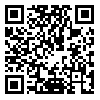Volume 7, Issue 5 (2016)
LRR 2016, 7(5): 143-174 |
Back to browse issues page
Download citation:
BibTeX | RIS | EndNote | Medlars | ProCite | Reference Manager | RefWorks
Send citation to:



BibTeX | RIS | EndNote | Medlars | ProCite | Reference Manager | RefWorks
Send citation to:
Atar Sharghi N. Analytical review of internal and external approaches to the linear regime change in Persian: Avrvfarsy case, ionic inquiry Parseek. LRR 2016; 7 (5) :143-174
URL: http://lrr.modares.ac.ir/article-14-32-en.html
URL: http://lrr.modares.ac.ir/article-14-32-en.html
Assistant professor of Persian, International University of Imam Khomeini, Qazvin, Iran
Abstract: (7538 Views)
The matter of transformation in the writing system of Persian language and employing a Latin- based alphabet for this mean has attracted, for a long time, the attention of many linguists and grammarians. In addition to cultural, economic and political factors as well as teaching Persian to non-Persian speakers, the technological development and some phenomena such as internet (chat), electronic letters (e-mail) and short messages (SMS) have made the issue more crucial.
Different reasons have been presented and some methods or alphabets have been proposed. But are the presented reasons always logical and scientific? Are the writing methods practical and usable? In this paper, we will argue the reasoning of three groups Eurofarsi, Unipers and Parsic for changing Persian alphabet and their proposed Latin-based alphabets for Persian language, as well as the common public method of Latin-based writing of Farsi. The findings showed that the relevant arguments seemed illogical and formed on the basis of this presupposition that Persian writing system has caused many problems for acquisition of this language. Furthermore, the proposed writing systems of these groups were not considered applicable to Persian.
Different reasons have been presented and some methods or alphabets have been proposed. But are the presented reasons always logical and scientific? Are the writing methods practical and usable? In this paper, we will argue the reasoning of three groups Eurofarsi, Unipers and Parsic for changing Persian alphabet and their proposed Latin-based alphabets for Persian language, as well as the common public method of Latin-based writing of Farsi. The findings showed that the relevant arguments seemed illogical and formed on the basis of this presupposition that Persian writing system has caused many problems for acquisition of this language. Furthermore, the proposed writing systems of these groups were not considered applicable to Persian.
Keywords: Key words: Persian Writing System, Persian-Arabic Alphabet, Persian Phonemes, Latin Based Alphabet, Change in Persian Writing System
Published: 2016/11/21
| Rights and permissions | |
 |
This work is licensed under a Creative Commons Attribution-NonCommercial 4.0 International License. |






